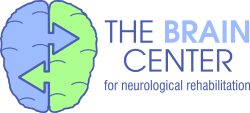 Neurofeedback, also known as Neurotherapy, is a biofeedback technique where the brain is trained to function more optimally through feedback (visual and/or auditory) that gives information about the brainwaves the individual is producing. This assists the individual to produce certain brainwave states that are most consistent with health and enhanced creativity, mental flexibility, and improved cognitive or thinking abilities.
Neurofeedback, also known as Neurotherapy, is a biofeedback technique where the brain is trained to function more optimally through feedback (visual and/or auditory) that gives information about the brainwaves the individual is producing. This assists the individual to produce certain brainwave states that are most consistent with health and enhanced creativity, mental flexibility, and improved cognitive or thinking abilities.
Neurofeedback is a tool that is used to help individuals who are having problems functioning, or for those who want to function to the best degree that they are able. We combine the use of a diagnostic procedure to identify areas of the brain that may benefit from training to improve an individual’s performance. A Neurofeedback program is designed for the individual based on individualized goals and an assessment of current functioning. Neurofeedback sessions are very often carried out in combination with other tools, such as mental skills training, relaxation and stress management techniques, nutritional supplementation, and audio-visual entrainment technology, depending on the needs of the individual.
When the brain is not functioning well, such as in situations of attention problems, depression, anxiety, addictions, head injury, or other medical problems, evidence of this often shows up in the EEG (Electroencephalogram).
By training the brain, much as you might train your body in physical exercise, we can help your brain learn to regulate itself and function better. Neurofeedback can help improve ones ability to regulate certain bodily functions (such as helping the body to respond better to stress, with less reactivity and intensity). Neurofeedback helps one to work more optimally, by improving mental performance and emotional well-being.
A better functioning brain can improve a variety of things, including better sleep; improved attention, alertness, and concentration; enhanced ability to relax and enjoy life; better ability to regulate mood or emotions.
Neurofeedback has been shown to reduce symptoms of anxiety or depression, and help with syndromes of migraine, fibromyalgia, or chronic pain.
EEG neurofeedback training has been studied and shown to be helpful in cases of seizures, traumatic brain injury, stroke, and certain other brain disorders, such as Attention Deficit and Hyperactivity (ADHD). In these instances the training does not so much as get rid of the problem as it helps to organize the brain to respond and function better in the context of whatever injury, dysfunction, or loss may exist.
How is Neurofeedback done?
Initially, we meet with you to review your medical history, symptoms, and present functioning. This may be followed with further assessments, including computerized testing, paper and pencil symptom checklists, or possibly a full 19-lead EEG assessment to determine areas of your brain that might best benefit from neurofeedback assistance. We also incorporate a state of the art biodiagnostic system using biofeedback and other assessment to help you learn to balance emotions, body, mind, and spirit.
A treatment plan is designed for each individual taking into account their unique issues or problems and assessment data.
Once we begin neurofeedback training, small censors are placed on the head in particular locations to measure your brainwaves during a session. This reads your brain-wave activity and we design a computer-assisted program that presents information with auditory and/or visual feedback to you so that you can learn to increase certain brainwave frequencies that we are “training.”
Neurofeedback is based on the input of the client’s report from day to day sessions as well as from the initial evaluation and depends on the full participation of the client so that protocols may be individualized in the most helpful manner. You may be asked to complete a daily symptom checklist to monitor your ongoing functioning during treatment.
How long does it take for Neurofeedback to have an effect?
Some people have a positive response to Neurofeedback sessions after the first session. More typically though, it may take anywhere from 5 to up to 50 or more sessions to experience a significant improvement and possibly more if you are dealing with a complex disorder or brain injury.
It helps to keep notes between sessions and to give specific details to your clinician about your particular responses so that your program of treatment can be tailored to your specific needs and symptoms.
Unlike medications though, once you have had a positive effect with Neurofeedback and completed an entire course of therapy, you are likely to maintain some or all progress for an extended period of time even after you stop treatment sessions.
 Are there any Adverse Effects of Neurofeedback?
Are there any Adverse Effects of Neurofeedback?
When administered by a properly trained professional, neurofeedback has been shown in research studies and clinical settings to be a safe treatment with a minimum of side effects. Your therapist will closely monitor the impact of sessions and work with you to tailor the optimal treatment protocols to address your presenting symptoms.
What Research says about Neurofeedback
Frank H. Duffy, M.D., Professor and Pediatric Neurologist at Harvard Medical School, wrote in the journal of Clinical Electroencephalography (January 2000) about the scholarly literature on neurofeedback, suggesting that neurofeedback should play a major therapeutic role in multiple areas. He wrote, “in my opinion, if any medication had demonstrated such a wide spectrum of efficacy it would be universally accepted and widely used” (p. v). “It is a field to be taken seriously by all.” (p. vii).
Human EEG biofeedback was first attempted in the 1960s at the University of Chicago. Early investigations focused on operant conditioning of alpha brain waves primarily to facilitate deep relaxation and meditation.
Studies done by Barry Sterman at UCLA on cats showed that when brainwaves were trained to certain frequencies, cats had greater resistance to seizures, than untrained cats. These results were replicated in monkeys and humans. The results with humans were further replicated in at least twenty studies at twelve different facilities.
After several years of treating patients with intractable seizures with neurofeedback, it was noted that hyperactive children not only had decreased seizure activity, but their behavior improved as well. In the mid 70’s, Joel Lubar at the University of Tennessee examined the effect of neurofeedback on hyperactivity alone and found encouraging results.
Additional research took place during the 1980’s by Eugene Peniston of the Fort Lyon (CO) VA Medical Center who undertook a groundbreaking study of alcoholics who received alpha-theta neurofeedback training in addition to the program normally provided by the facility. Five years after treatment, 70% of the participants were still abstinent. Continuing through the present day, a number of researchers have worked to move the field forward.
Some Conditions or Situations for which Neurofeedback or Neurotherapy has been of benefit:
- Peak Performance Enhancement
- Reduction of Stress Reactivity
- Attention Deficit Disorder
- Depression
- Anxiety
- Post-traumatic Stress
- Stress-related physical problems
- Neurological conditions
- Addictions
- Migraines
- Sleep Disorders
- Chronic Pain
- Chronic Fatigue
- Multiple Chemical Sensitivities
- Premenstrual symptoms
- Mild closed head injury
- Panic attacks or Anxiety
- Autoimmune problems
- Learning problems
- Seizures
- Relaxation and enhanced meditation
- Concentration improvement
Can Neurotherapy help me achieve Peak or Enhanced Performance States?
Neurofeedback has been used successfully in conjunction with a variety of other tools to assist people to function optimally in many areas, including athletics, mental performance, and creativity.
Areas where Neurofeedback has been used to assist Peak Performance include:
- Athletic performance —including improving better mental, emotional, and behavioral control, learning to be “in your zone”
- Academic performance —including for reduction of test anxiety, improved concentration and focus, and to enhance academic skills and academic excellence
- Professional performance —including enhanced flexibility, creativity, better productivity, and greater mental performance
- Artistic performance and creativity —including for Movement arts and Musical performance enhancement, improving creative energy and flow
There are a variety of positive outcomes that have been reported from the use of Neurofeedback for Enhanced Performance training, including:
- Alleviation of symptoms of depression, attention problems, worry and anxiety
- Better productivity at work and school
- Ability to relax the body and mind
- Quieter emotions—ability to self-regulate mood and emotions
- Improved self-esteem
- Increased creative energy and output
- More positive thinking
- Greater mental and emotional flexibility
- Greater physical and mental control
- Reduction in the intensity of reactions to stress
- Reduced physical discomfort from pain
- Improved ability to focus and concentrate
